
Predatory journals may look like genuine journals but closer scrutiny will reveal many red flags that should serve as a warning to serious researchers who don’t want to be tricked.
Spotting predatory journals is quite easy in most cases. By default, most predatory journals have at least a few red flags (as listed here) that should warn researchers of the true nature of the journals. In those cases where it is very difficult to tell them apart, researchers should consult their librarians or fellow-researchers to be sure before submitting their papers.
Since September 2012, I have written many articles on predatory journals, and in a matter of a few months since I wrote the first piece I learnt to identify a bogus journal within minutes. Many times, a cursory glance at the home page of the journal website is all that is needed to spot a predatory journal. With time, many predatory journal publishers have become more proficient in making their websites look more professional. But even these professional looking predatory journals have all the tell-tale sings which will reveal their true identity.
As a result, I never felt compelled to write about how to identify predatory journals. And that has been one of the major failings on my part. I realised it when a senior colleague who had earlier worked with The Hindu emailed me asking for tips, guidelines, markers to identify predatory journals. He was to conduct a workshop on research writing and wanted to speak about the choice of journals and how to avoid predatory journals.
I have come across many papers that list out various criteria that serve as a clear giveaway of predatory journals but could not locate the papers instantly and share it with him. And a couple of days ago, a Facebook acquaintance sought my help in confirming if a particular journal was genuine or predatory. He already doubted the journal but wanted my help nevertheless. So though belated, here is a simple list of red flags that serious researchers should look for in order to avoid being tricked by predatory journals.
Why do I say “serious researchers”?
There may be several reasons why respected, senior researchers end up publishing their papers in predatory or bogus journals. Very often they do so as they are not aware of what they are dealing with. “They’re tricked. They think it’s a legitimate journal, they get the invitation in the mail, and they accept it. The reason I call [certain publishers] predatory is because they prey on people. They try to trick honest researchers, and sometimes they are successful,” University of Colorado Denver librarian Jeffrey Beall was quoted as saying in The Scientist as recently as July 2017. Beall coined the term “predatory publishing” nearly a decade ago and maintained a list of “potential, possible or probable” predatory open-access publishers and journals. He took down the list in January 2017.
With Beall’s list not being updated (though the old list is still available in the wayback machine) and Caball’s White and Black lists available only to subscribers, researchers have to find their own ways of identifying predatory journals. The red flags listed below may thus help serious researchers stay clear of such journals. After all, the rate at which new predatory journals are mushrooming and the number of papers published in them is mind boggling. According to Christine Laine and Margaret Winker from the World Association of Medical Editors, there an “estimated 8,000 active predatory journals, and the total articles have increased from 53,000 in 2010 to 420,000 in 2014. An estimated three-quarters of authors were from Asia and Africa.”
Victims or willing partners
But an overwhelming majority of researchers from India who publish in predatory journals do so knowing fully well the true nature of these journals. In most of these cases, the journals are not predators. Instead, the researchers are actively seeking these journals to publish sub-standard and questionable work to meet the University Grants Commission’s (UGC) conditions either to obtain a PhD degree or to get a promotion if working as a faculty. Researchers, especially from State universities and colleges in India, are willing partners and not innocent victims who walk into the trap unknowingly. This is one reason why I strongly think calling them predatory journals may not be correct in many cases; bogus journals might be a more appropriate term, at least in the Indian context.
“Unlike many writings about the phenomenon, we believe that most authors are not necessarily tricked into publishing in predatory journals; they probably submit to them well aware of the circumstances and take a calculated risk that experts who evaluate their publication lists will not bother to check the journal credentials in detail. Hence we do not uncritically see the authors as unknowing victims,” Cenyu Shen and Bo-Christer Björk wrote in an October 2015 paper published in the journal BMC Medicine.
Tips for the serious researchers
But for the small percentage of Indian researchers who face difficulty in identifying predatory journals, here is a list of tips that I use or look for to confirm if a journal is predatory. I have also included the tips provided by Beall and the 13 ways to identify predatory journals as provided by Larissa Shamseer from the University of Ottawa and Dr. David Moher from Ottawa Hospital Research Institute, Ontario, Canada.
A researcher narrates his experience
I sincerely hope this list will help people like Aravindhan Vivekanandhan, Assistant Professor at Chennai’s Dr. A.L.M. PG Institute of Basic Medical Sciences, to stay clear of predatory journals. “About five years back I did a small study and the results [were] interesting and wanted to publish it in a good journal. Unfortunately, since the results were limited the paper got rejected again and again. At that time I received an invitation from a journal to submit a paper. Since the journal’s name was very relevant to the manuscript in hand I checked for the impact factor. The journal’s website indicated it as 2.5* with a star at the top which I didn’t care (my bad). Then I checked the PubMed and found a few articles in PubMed. Again, I assumed it to be recently PubMed indexed (my bad). It was a paid journal and I also applied for a waiver, which the editor declined.
“Within two weeks the paper was accepted and I happily informed my collaborator. Then came the thunderbolt from my collaborator. He pointed out that it is a predatory journal and the published impact factor (which was displayed in the journal’s home page) was actually calculated by the journal itself (hence the star at the top). I immediately sent a mail to the editor stating that I am withdrawing the paper. But as usual there was no response. When I was modifying the paper to submit to another journal came the second thunderbolt from my collaborator. He wrote to me saying that the article was already published in that journal with a link to the article. So I lost the opportunity of even trying with the second journal,” says Vivekanandhan. “But the worst was yet to come. Just two weeks after publication, the journal sent me an invoice for publication fee which I didn’t bother to respond. Till last year, every six months, I was receiving a reminder mail from the journal to pay the publication fee.”
The journal (Journal of Clinical and Experimental Cardiology) in question is published by OMICS group based in Hyderabad. Continue reading to know why you should avoid publishing any papers in OMICS-based journals.
1) Unprofessional homepage
The first giveaway of a predatory journal is the unprofessional home page. Use of garish colours, use of multiple colours, use of scrolls, pointers with the keyword “new” that keeps blinking, use of header images (see the image below), information on conferences are a few features that predatory journals have in common.
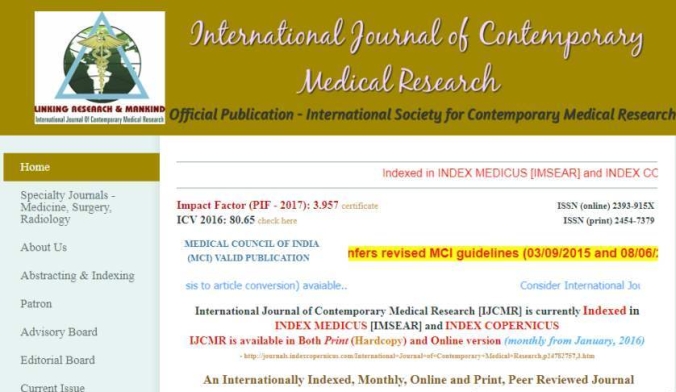
Some journals like the International Journal Innovation research in Science & Engineering has a “visitors counter” (see image below) with the names of the countries and their national flags.

Bottom of the homepage of the International Journal Innovation research in Science & Engineering.
When you click on the “see more” on the visitors counter you are led to granular details of the visitors to the website. And you are treated to an advertisement for flats (or apartments) in Chennai, India!
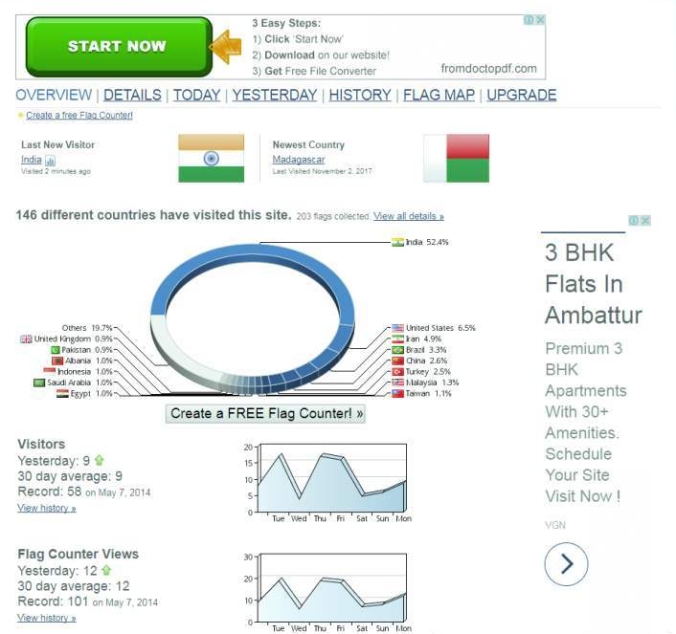
Granular details of the visitors to the website
2) Contact details
 Very often the contact details will not have the name and verifiable address and email of a person. One will find the post box number or only the email address with no other details in the contact us drop-down list as seen below.
Very often the contact details will not have the name and verifiable address and email of a person. One will find the post box number or only the email address with no other details in the contact us drop-down list as seen below. 
3) Impact factor
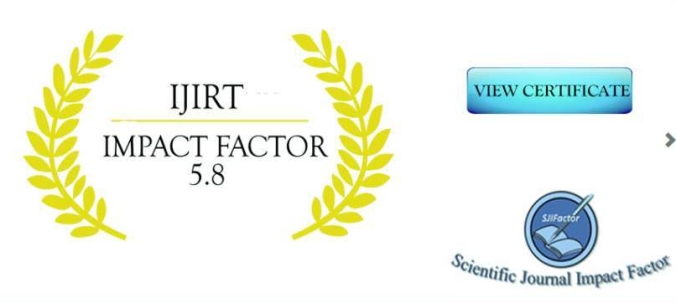 While genuine journals have impact factor as calculated by Thomson Reuters, predatory journals are well known for giving themselves very high impact factors even if the journal has been in existence only for a couple of years. Various names are given to such impact factors and these journals have their own method of calculating them, if at all. For instance, the Hyderabad-based OMICS group says: “The 2016 Journal Impact Factor was established by dividing the number of articles published in 2014 and 2015 with the number of times they are cited in 2016 based on Google Scholar Citation Index database. If ‘X’ is the total number of articles published in 2014 and 2015, and ‘Y’ is the number of times these articles were cited in indexed journals during 2016 then, journal impact factor = Y/X.”
While genuine journals have impact factor as calculated by Thomson Reuters, predatory journals are well known for giving themselves very high impact factors even if the journal has been in existence only for a couple of years. Various names are given to such impact factors and these journals have their own method of calculating them, if at all. For instance, the Hyderabad-based OMICS group says: “The 2016 Journal Impact Factor was established by dividing the number of articles published in 2014 and 2015 with the number of times they are cited in 2016 based on Google Scholar Citation Index database. If ‘X’ is the total number of articles published in 2014 and 2015, and ‘Y’ is the number of times these articles were cited in indexed journals during 2016 then, journal impact factor = Y/X.”
Prof. Vimal Mishra from Indian Institute of Technology (IIT) Gandhinagar pointed out how wrong even this supposed calculation of impact factor by OMICS is. He says: “It should instead be the number of citations divided by published articles. So it should be X/Y and not Y/X as OMICS states.”
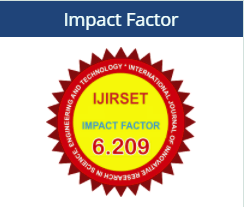 By default, all predatory journals carry the Index Copernicus Value on the website. “A metric called the Index Copernicus Value (ICV) is associated almost exclusively with illegitimate entities. Legitimate journals do not appear to use this questionable metric. Not all illegitimate entities have it, but if you see this metric listed on a potential journal’s website, it’s probably best to stay away,” Shamseer and Moher write in the paper.
By default, all predatory journals carry the Index Copernicus Value on the website. “A metric called the Index Copernicus Value (ICV) is associated almost exclusively with illegitimate entities. Legitimate journals do not appear to use this questionable metric. Not all illegitimate entities have it, but if you see this metric listed on a potential journal’s website, it’s probably best to stay away,” Shamseer and Moher write in the paper.
4) Scope of the journal
It is uncommon to see a journal covering diverse fields in science, combine various fields in science and technology into one journal or cover all possible fields of specialisation, say in a field like medicine. It should therefore serve as clear evidence that a particular journal which covers multiple areas or fields which are completely unrelated is nothing but predatory journal.
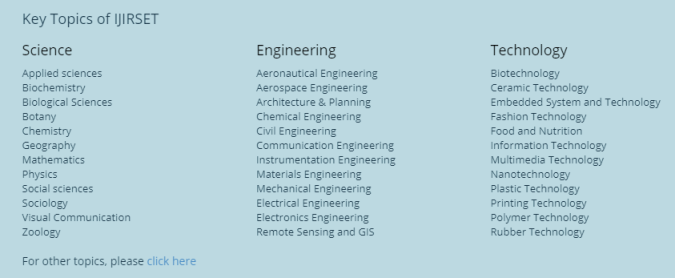
This journal covers different fields in science, engineering and technology.
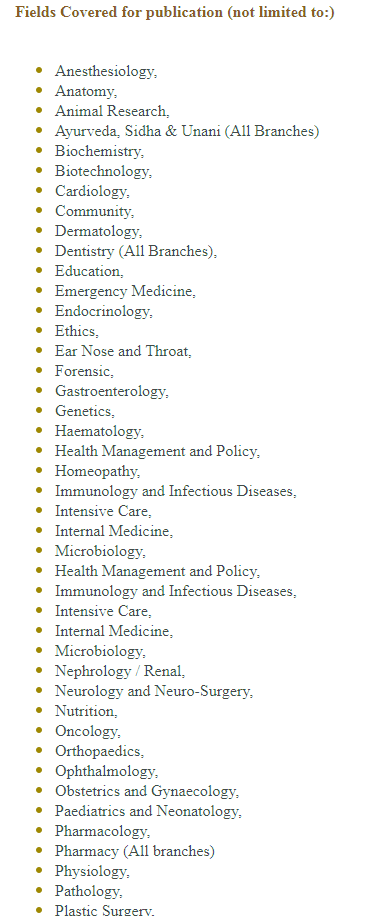
This journal covers almost all medical fields and includes allopathy and Indian system of medicine too.
5) Rapid publication
 Long time taken before a manuscript is accepted for publication by genuine journals is almost a norm. On the contrary, predatory journals as a rule accept and publish papers in a matter of a few days. And they proudly announce this. This alone should serve as a red flag for any serious researcher. Predatory journals seldom carry out peer-reviewing and even if carried out the outcome leaves much to be desired. And this allows predatory journals to publish papers within a day or two.
Long time taken before a manuscript is accepted for publication by genuine journals is almost a norm. On the contrary, predatory journals as a rule accept and publish papers in a matter of a few days. And they proudly announce this. This alone should serve as a red flag for any serious researcher. Predatory journals seldom carry out peer-reviewing and even if carried out the outcome leaves much to be desired. And this allows predatory journals to publish papers within a day or two.
But taking the cake is this International Journal of Advance Research and Development which advertises itself on Google with the promise of rapid publication.

Here is another example of a journal with the promise of “easy and rapid” publication of papers.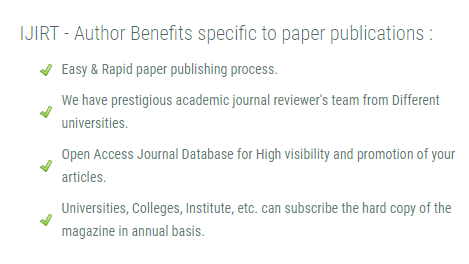
6) Publication charges
The publication charges are very often not clearly mentioned and if mentioned is often way lower than what genuine journals charges. While the article processing charges levied by genuine journals is above $800, predatory journals charge less than $200. Keeping the publication charge low is one way to attract more researchers from submitting their manuscripts to the journal. This is particularly attractive to researchers from State universities and colleges in India as they receive no funding from any agency and have to meet the publication expenses from their own pockets.
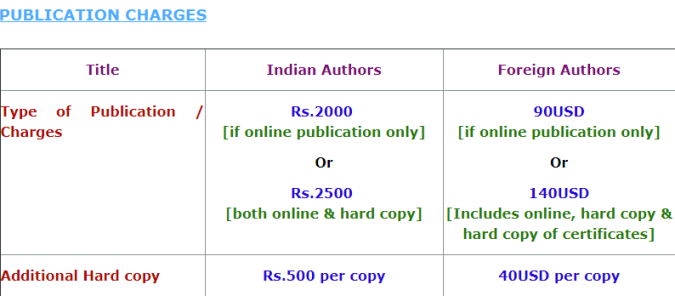
7) Non-professional email address
Like in the case of “contact us” drop-down list, many predatory journals do not use “institutional or journal-affiliated email addresses as a marker of professionalism. Check the “contact us” email address(es) as a first pass”. Seldom can you see non-professional or non-journal affiliated email address in a genuine journal.
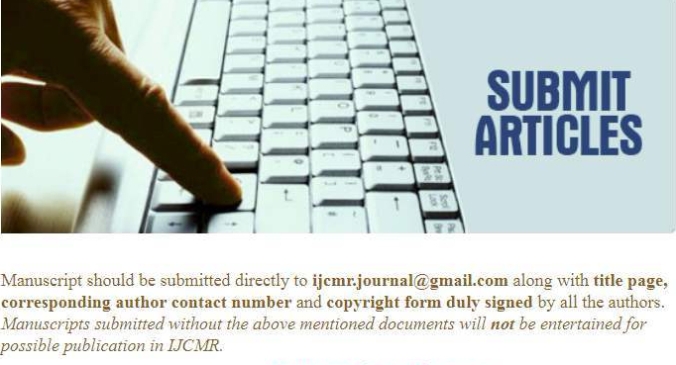
7) Indexing of journals
A paper published in a journal is of little use if it not archived in a database perpetually. “It is a prerequisite for any journal seeking to be indexed in databases such as PubMed; it also a vital part of the inclusion criteria for entities such as the Directory of Open Access Journals,” Shamseer and Moher write in the paper. Predatory journal papers are never archived in reliable databases and the journals are not indexed in industry-standard databases. Index Copernicous International is invariably listed as one of the indexes by most predatroy journals. Similarly, Google Scholar is another commonly listed entry though it is not an industry-standard one. Even when predatory journals claim to be indexed in DOAJ, the claim is very often NOT true.
The DOAJ ‘Reapplications project’ that was started in January 2015 came to an end very recently. The project was to weed out predatory or questionable journals from its database after a sting operation revealed that many predatory journals are listed in DOAJ. “The DOAJ Editorial Team processed 6,359 reapplications, of which 2,058 were rejected. A further 2,860 journals were removed from the database for failing to submit a reapplication at all. In total over 40% of the journals were culled from the database”.
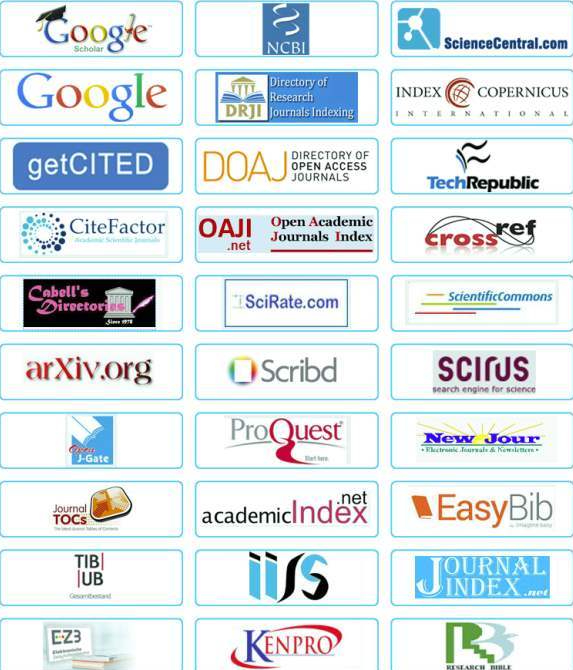
8) Retaining copyrights
The very core of Open Access journals is that copyrights remain with the authors and not transferred to journals unlike in the case of subscription journals. Though predatory journals follow the Open Access model of publishing papers, very often publishers demand that copyrights be transferred prior to paper publication. This alone should serves as a warning and researchers should steer clear of such journals as they are not genuine.
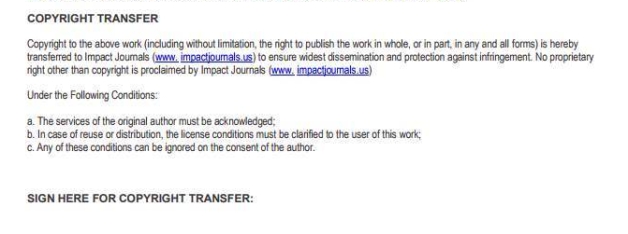
9) Fictitious members of Editorial Board
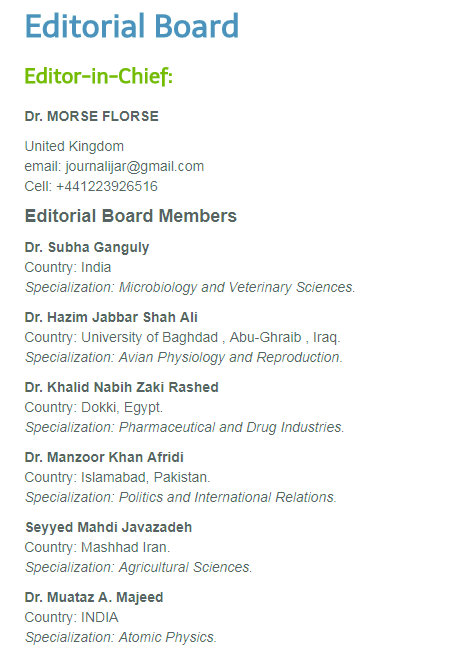 Predatory journals by rule include highly respected scientists without their consent and even when the consent is taken, the scientists are not fully aware of the true nature of the journals. There are instances when scientists with expertise in different fields are included as board members in journals that are no way related to their area of expertise. And some (like the photo alongside) don’t even list the names of the institution of the Editorial board members.
Predatory journals by rule include highly respected scientists without their consent and even when the consent is taken, the scientists are not fully aware of the true nature of the journals. There are instances when scientists with expertise in different fields are included as board members in journals that are no way related to their area of expertise. And some (like the photo alongside) don’t even list the names of the institution of the Editorial board members.
That said, many Indian researchers are rushing in to be included in such fake Editorial boards as it adds glamour to their biodata. Serious researchers should consult with those listed in the Editorial board to ascertain the nature of the journal.
10) Invitation to become reviewers
It is not uncommon to see predatory journals extending an open invitation to researchers to become reviewers. Some extend this invitation to become members of the Editorial board. Just like in the case of becoming an editorial board member, researchers in India are only too willing to become reviewers, even if they don’t receive any manuscript for reviewing. Being a reviewer of a journal adds weight to biodata.

11) Certificate of publication
Unheard of in the case of subscription journals and genuine Open Access journals, predatory journals offering Certificate of publication at an extra cost is quite common. That then becomes an additional source of income for publishers. What worth such certificates would have is anybody’s guess. It is not known how many authors seek such certificates though.
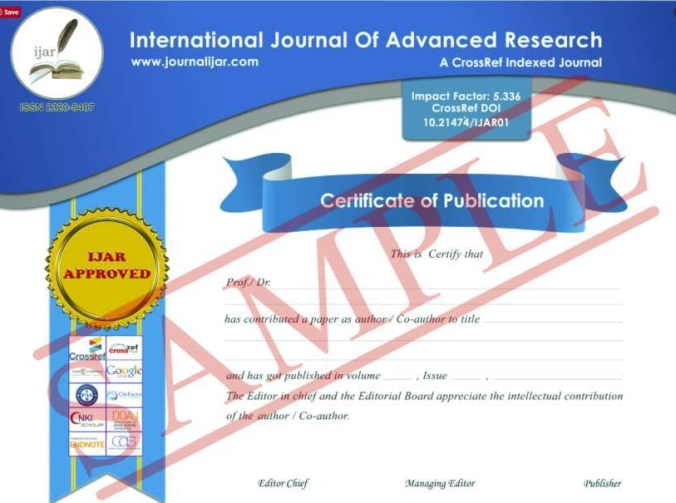
12) Mails soliciting papers
Finally, the most important parameter that should be used to decide a journal’s standing is whether it bombards your inbox with mails soliciting papers and assuring rapid review and written in a highly praising manner. Such is the spamming that researchers end up getting mails from journals that are completely unconnected with one’s area of expertise.
13) Stay clear of journals from OMICS group
In August 2016, the U.S. Federal Trade Commission (FCC) charged the Hyderabad-based OMICS group for “deceiving researchers about the nature of its publications and hiding publication fees ranging from hundred to thousands of dollars”. And in November this year, a federal district court in the District of Nevada granted a preliminary injunction temporarily halting the deceptive business practices of the OMICS group.
Unlike other predatory journals, those from the stable of OMICS are more genuine-looking. While journals from this group still cite fancy impact factors that they give themselves and proudly claim to be indexed in Index Copernicous International, they are still a bit difficult to spot. With over 700 journals, the OMICS group is the big daddy of the dark side of journal publishing.
Worse, they have bought genuine journals making ot all the more difficult to tell the difference. It is better to stay clear of journals from this group.

14) Journals claiming to be UGC-approved
Like journals from the OMICS group, stay far away from journals that proudly declare to be approved by UGC. It is already known that at least about 200 predatory journals (here and here) are listed in UGC’s Whitelist.

15) Mention of conferences on homepage
The moment you see a journal homepage providing details of conferences or inviting readers to participate in conferences, you can be sure it is a predatory journal. Predatory journal publishers make huge money by holding conferences that are fakes by any stretch of imagination.
16) Instructions to authors are plagiarised
While the homepage is shabby and has all the telltale signs of a predatory journal, the instructions to authors site alone is comprehensive and well written. Very often the content is a copy paste job. The International Journal of Contemporary Medical Research is one such journal which has copied the instructions to authors from several sites, including Elsevier.
17) Provision to publish thesis
Journals publish papers and even conference proceedings. But ever heard of journals publishing PhD thesis? The International Consortium of Scientists & Researchers and few other journals give you that option as well!
Here is another journal which offers to publish thesis. The journal has indeed published 23 theses so far!
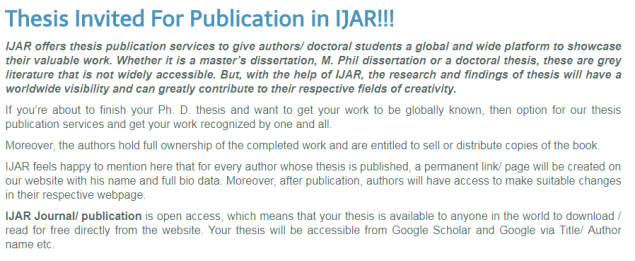
18) Finding a guide for researchers
The International Journal of Advance Research and Development offers a unique service to researchers. In case researchers are unable to find a supervisor for themselves then they can turn to this journal for help; members of the Editorial board will try and locate one for such researchers! But there is not guarantee that it will be able to help the researchers, the journal warns.

19) Beall’s criteria for identifying predatory journals
Though Beall’s criteria are not available online, here are some of his criteria that can be used to spot predatory journals.
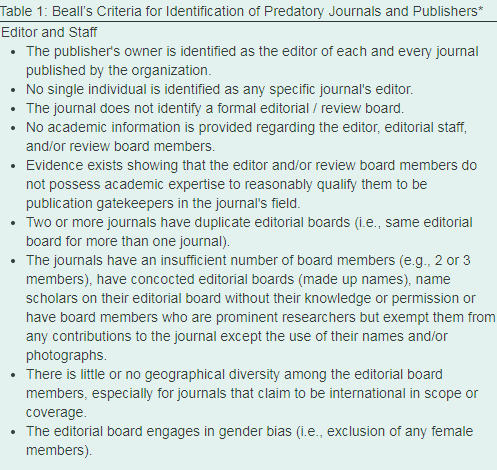
20) And other grave concerns
In addition, predatory journals display no strategies for how to handle misconduct or conflicts-of-interests. Very often, the title of the journal has the catchword “International” though there is nothing international about the journal. Any publisher with many journals that have been launched in a short span of time should be viewed with suspect. And those that are clones of original journals (titles of the journals are the same as the original journal and also look identical), like in the case of Current Science, should be a cause for concern.
This effort is really commendable. These predatory journals is a setback for the process of research. I thank author for bringing out the truth and let us know red flags.
Many of such journals are included in the UGC’s list of preferable journals. I remember, I was closely checking all the details on the journal’s website to check whether they are compatible with the guidelines offered by UGC. To my surprise, such journals made quick changes in their website so that they are not excluded from the list.
This is a big problem.
Thanks for the article, a must read.
Reblogged this on Science Geek and commented:
An excellent advisory for all fellow researchers looking to publish their scientific hard work by Prasad Ravindranath, science editor @ Hindu